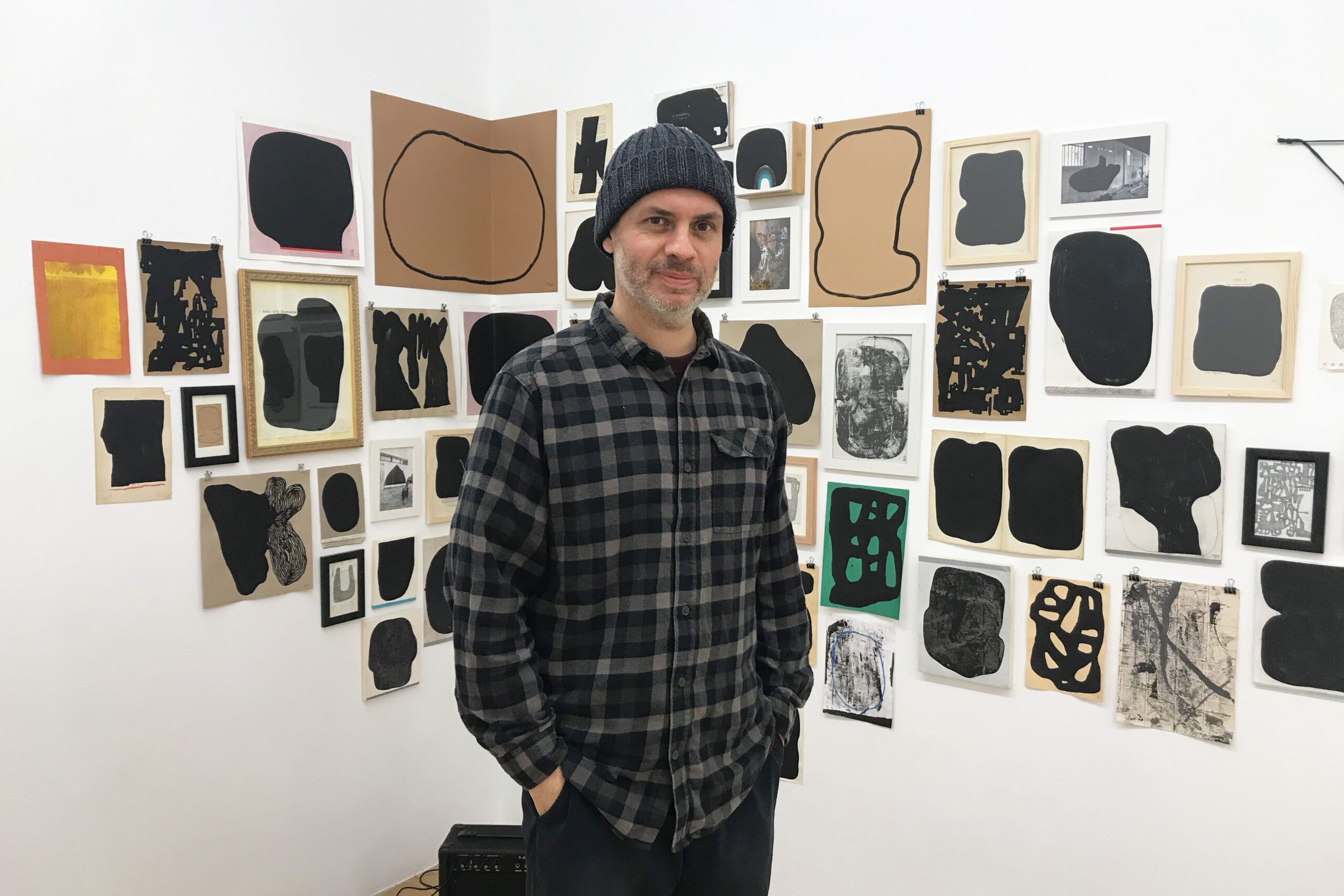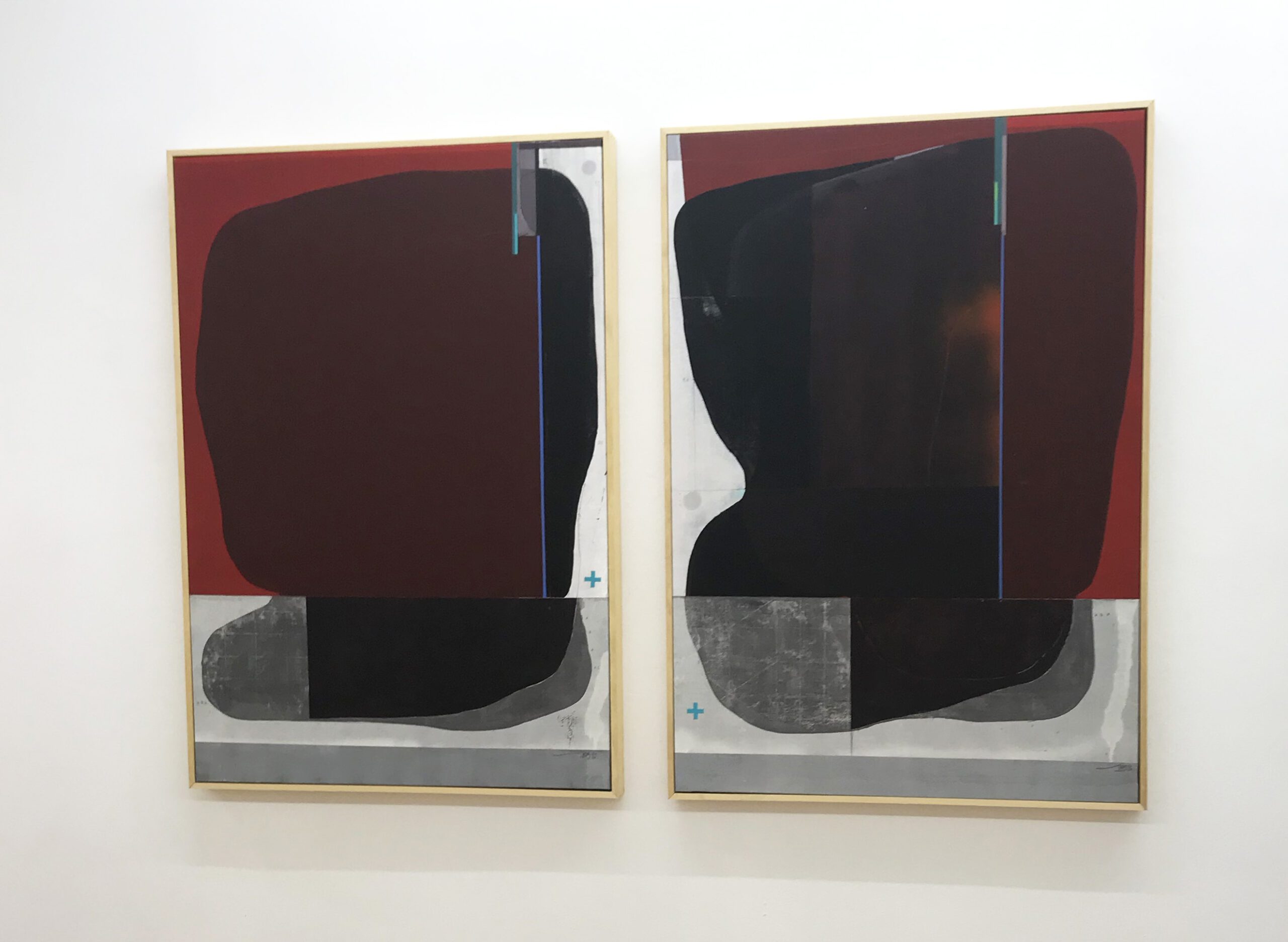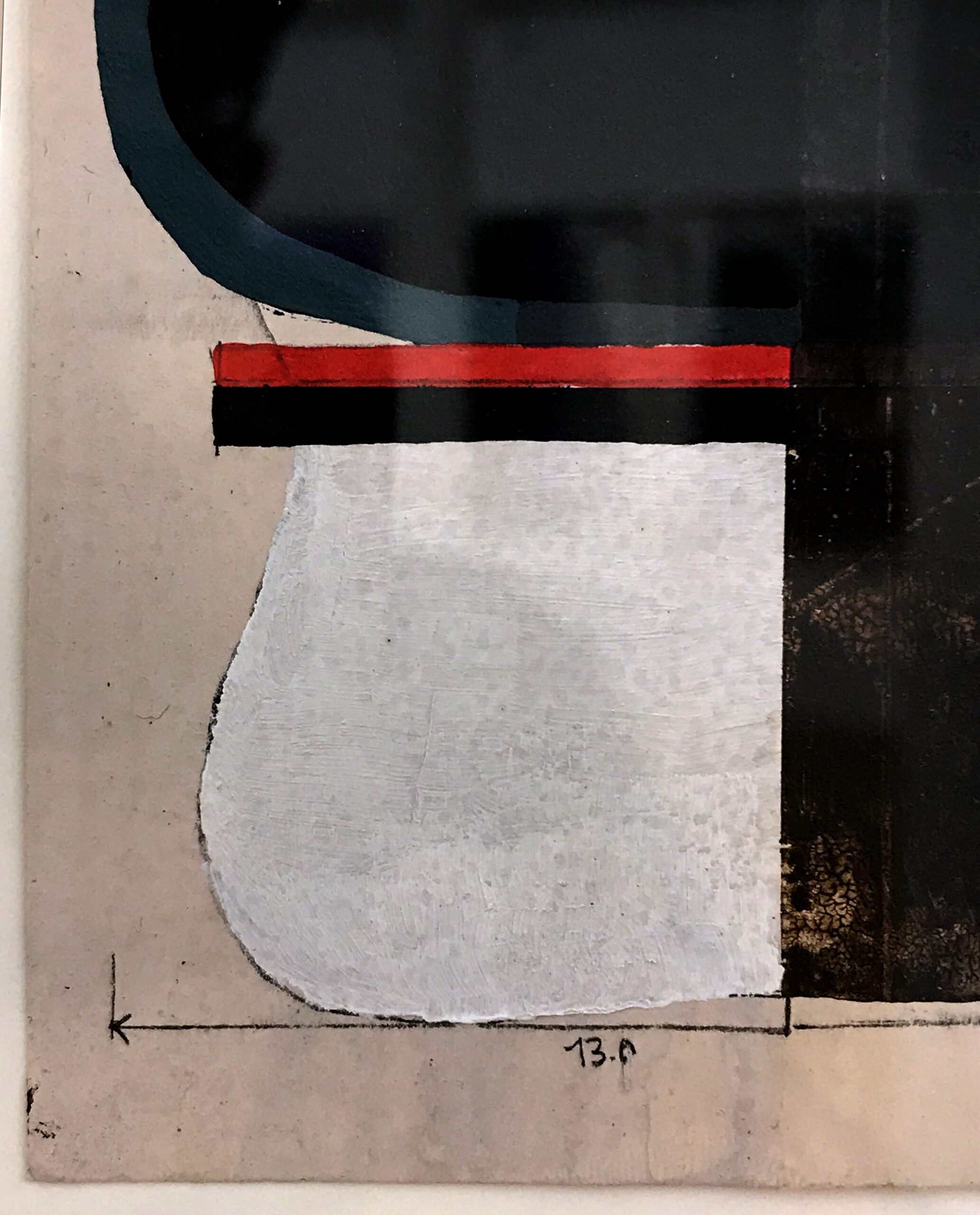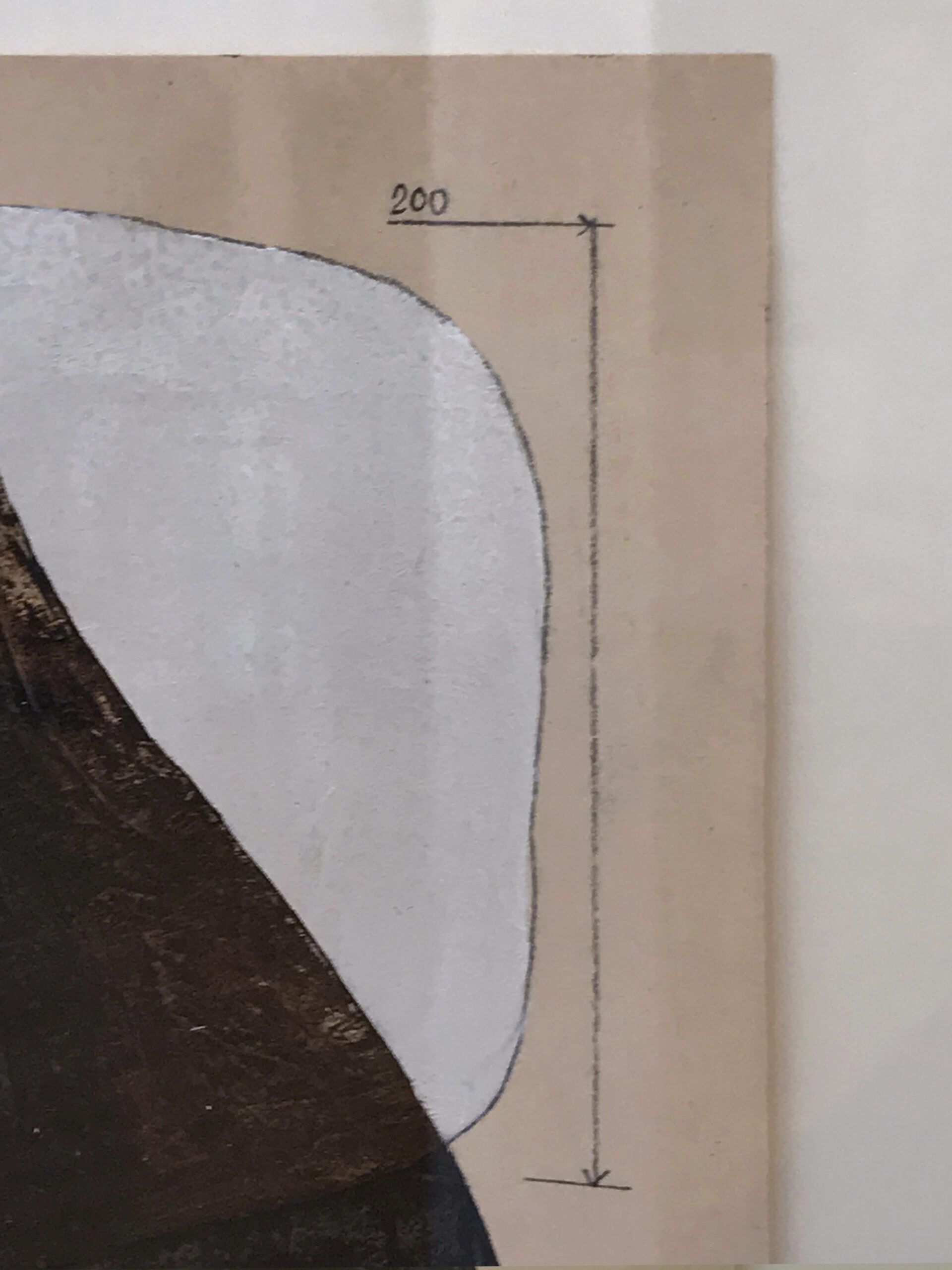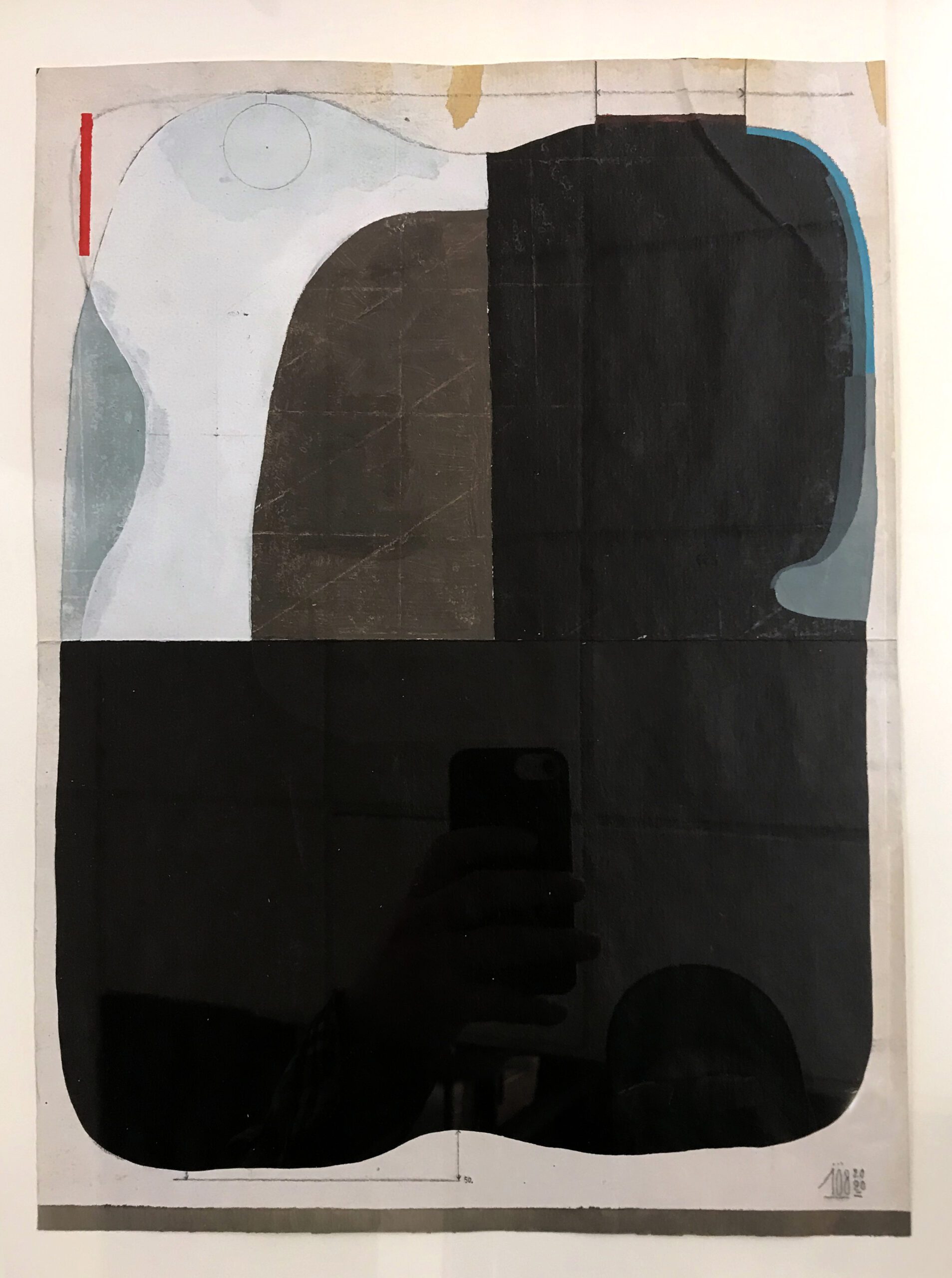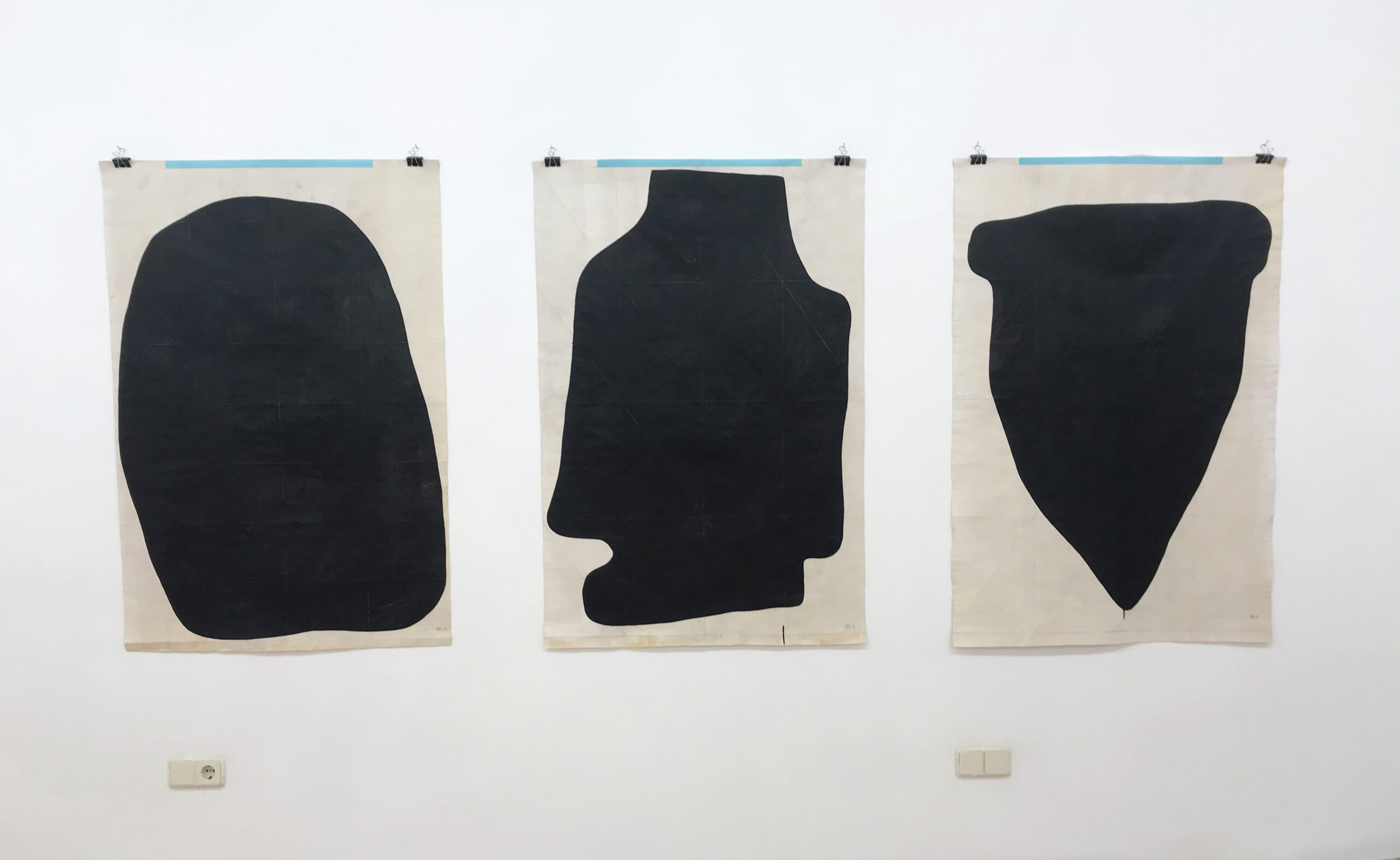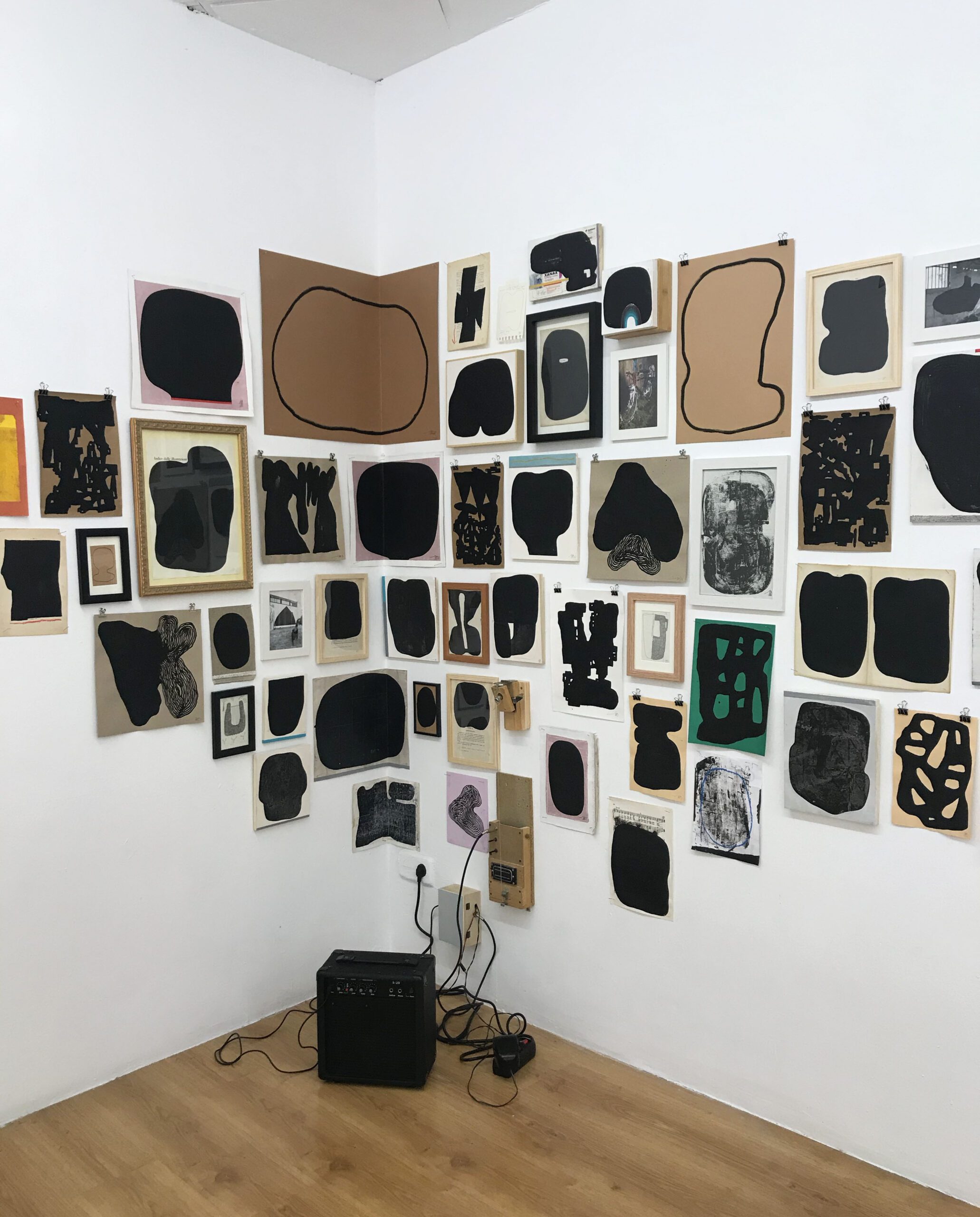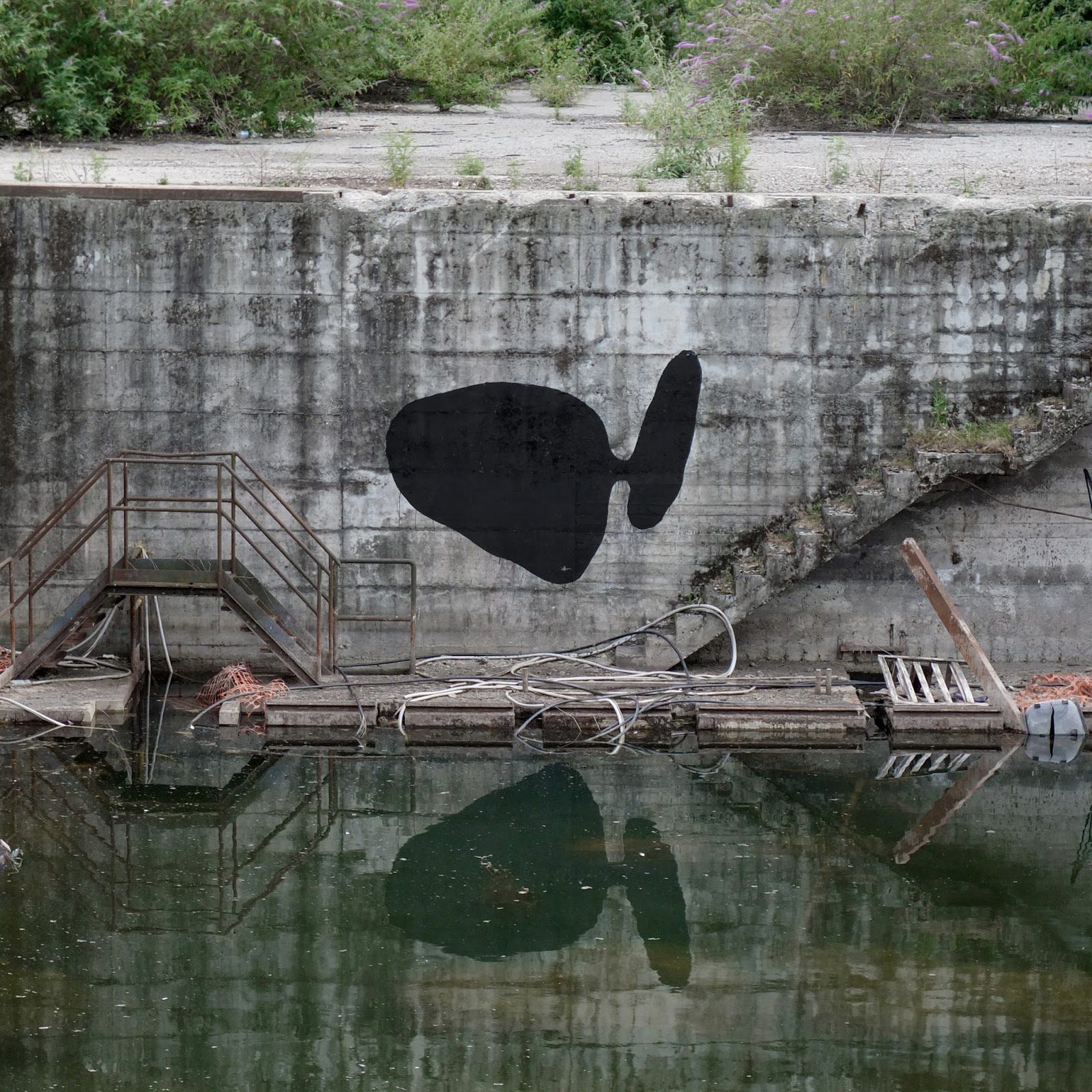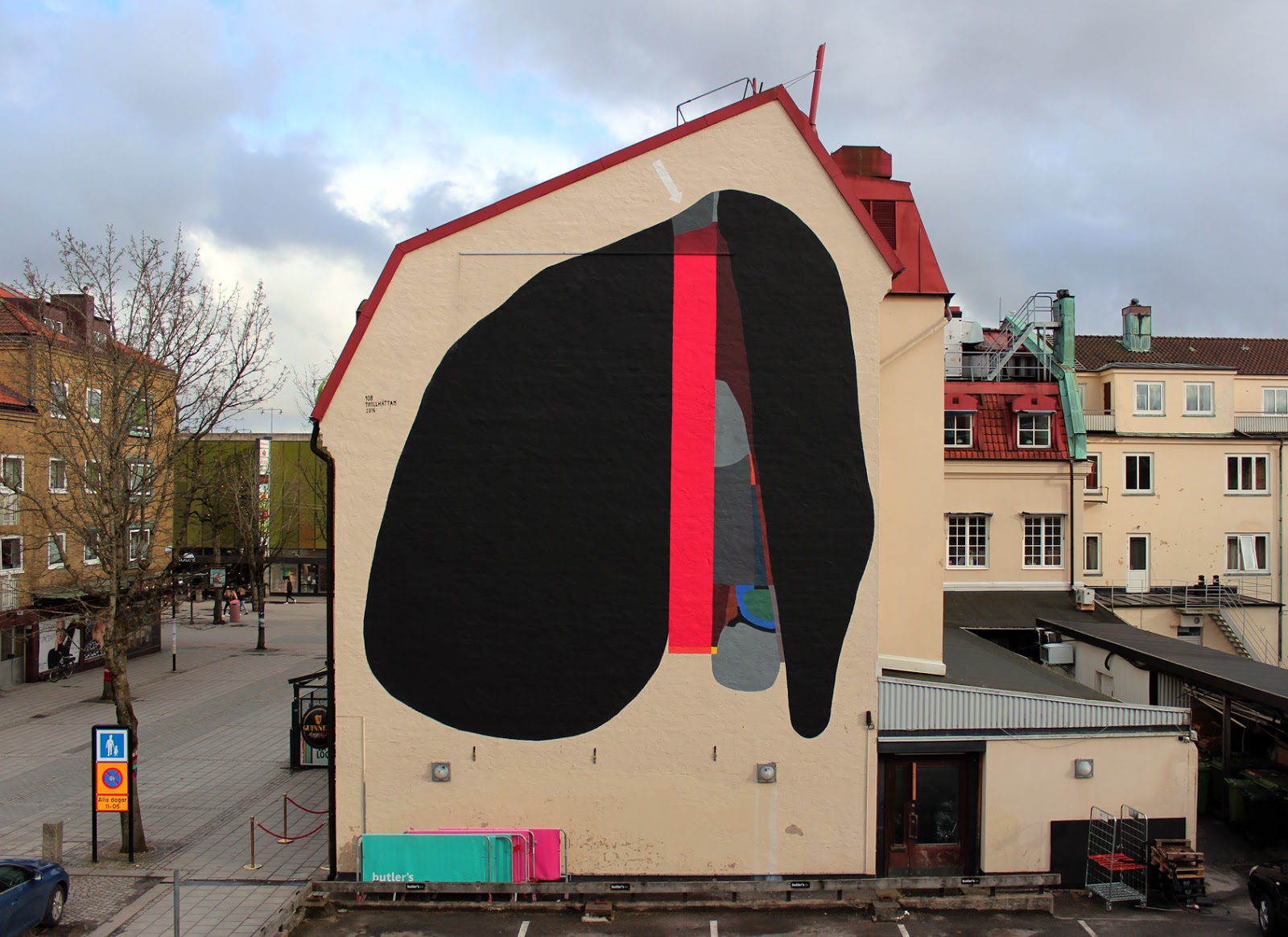On January 29th, Italian artist Guido Bisagni (Alessandria, 1978), better known as 108, inaugurated “To the Clouds”, his latest solo exhibition at Swinton Gallery in Madrid. A show that gathers around thirty new and original works on paper and on canvas that revolve around the concept of “Orphism”.
Raised in the graffiti scene as one of his first forms of artistic expression, 108 has more than 15 years of professional experience on his back and is today a standard-bearer of post-graffiti in Italy and internationally. One of those artists who feels as comfortable painting illegally in the street as he does presenting his studio work inside the walls of a gallery. Guido Bisagni has found in the black and abstract forms –almost doors to another dimension–, the way to express himself and to transmit what is happening inside himself: «it’s the purpose of art», says Guido, «to communicate what we are unable to express with words».
Shy, quiet, reflective and with a very singular aura, 108 has created over the years a language and style of his own that is torn between the irrational and the rational parts that dominates his thoughts and the emptiness and fullness among which his figures dance. And black. Always black.
Reflection, depth, emptiness, a void or connection with the beyond, messages without deciphering, magnetism, claustrophobia, magic… 108 uses his works as meditative tools, and as if it was a shamanic process and pushed by the forces of the beyond, he manages to take us – thanks to his touch of brush and paintbrush–, to his personal universe as enigmatic as it is revealing.
“To the clouds” it’s your most recent solo exhibition at Swinton Gallery in Madrid. We’ve been able to see a big number of new pieces and a lot more color than usual…
This is completely new, it never happened before! I was thinking about being in Spain and how the Spanish artists are more colorful and I thought I could make and experiment and try. This exhibition was supposed to happen last September, but the show was delayed due to Covid… What I present are all new works made for this show during 2020 and added a few new early 2021. These two reds [picture below] are the two first pieces I started doing for the exhibition during summer 2020 and I ended up finishing them last minute. I made an all-red background but I wasn’t happy at all, there was to much color, so I painted over it in the part below. I have some “problems” with color, you know, so this was too much… (laughs).
“Le cose che sono” Artworks
What is your “problem” with color?
I’m never satisfied. Maybe it’s too happy for me (laughs). It doesn’t mean I don’t love colors, but it’s true that for years I painted only black. My main focus was to concentrate in the shape, the form and for me the black color is very important, it’s a symbol and the most powerful color to make forms. Also, I think that black was the most elegant color to paint when I was doing some illegal walls in the street. When you paint inside and old place, I feel black is the most natural color, introducing others I feel it could be disrespectful with the place. There are many books I love that talk about philosophy around black, it turns as a manifesto and a statement to me. By the end of the 90’s and beginning of 2000’s I was always dressing black, I was more gothic in a way, at the end, everything I do is always very personal. Black is a message of introspection for me. Do you know when people are too invasive? For me it needs to be the opposite. There are so many secrets into this color and into my paintings…
Exactly, your work hides many undeciphered messages, symbols, numbers… What are they based on?
Sometimes it’s just numbers that I think randomly and want to remember them. Randomness is important to me, also in a magical way. I like the references of automatic drawings and automatic writing in my paintings, like this surrealistic and pre surrealistic insertions. They are magical, they represent the contact with the unknown and this is why the show revolves around Orpheus and Orphism, a very mysterious religion there is very little knowledge about. What I like about this concept is that sometimes you can’t explain everything, you have to experience it: that’s art for me. Sometimes when you explain things you loose the most important part about art, which is to try to communicate something you can’t explain with words.
In your work you combine completely abstract elements, with no apparently ordered form, with lines, circles and other more geometric elements. What goes through your head when you face the work?
Everything I do represents this kind of contrast. A mix in between the rational and the irrational, the free side of myself and other more connected to geometrical figures, a straighter one lets say. My mind it’s always like this: the free forms might need something structured. Through the years I have evolved in the way I deal with this: some years ago my forms were more geometrical, but ten years ago, when I started having some problems with anxiety, I tried to distance myself from this rational structured part, the one that made me scared… And ended up becoming too irrational! Now I try to find the balance. When I look into my paintings, I can tell what I was going through in my personal self.
Do these sometimes messy strokes and pencil lines, painting over painting… have something to do with the search for balance in your work?
This is something that transcends the pictorical part to represent a more philosophical one. For years I tried to hide my mistakes, my “dark side”… Look back and try to forget it. It’s the same with my paintings. I start doing one shape but then I only like one of the parts of this shape, so I start deleting and painting over here and there. Now I love the fact that you can see that action that happened there. Sometimes I even do it on purpose because I need to create imperfections, I think the painting needs compensation. I like the mistakes, I embrace imperfection… All that I do is against perfection.
Is this the result of a personal evolution?
To understand it took a long process to me, I never make any decisions from one day to the other. I observe, I see what I enjoy, what I don’t, reflect about it… I keep learning form my practice. Sometimes it represents a struggle to me. I would like to paint more freely but I somehow can’t. I admire my friends artists that are able to be free while painting. I’m an anxious person so I’m never completely happy. I overthink too much and it’s not until I do 5, 6, 7 or even 10 forms that I start painting without thinking about what I’m doing. I like it when I get to this stage of freedom, this very difficult balance between what I want to do and what the brush is telling me to do.
Precisely someone might think that facing an abstract work should imply less rules, less overthinking and more freedom of movement. I try to imagine you in front of a canvas, figuring out how to face that next form… To what extent do you feel free or constrained when facing it?
The shape is the center of my work so I’m always looking for the perfect one. However I don’t know which one is the perfect one, it keeps changing, it’s something you can’t understand really. So sometimes I use a pencil to sketch before and sometimes I don’t. It’s more like a shamanic process to go inside the unknown and to let the spirits take you… It’s kind of magical feeling I like to generate not only when I’m painting but when I create in general. Also when I make music, or sound, I’m not sure if you can call it music! (laughs). Even in life, to follow these unknown forces that take you here and there, it causes me a lot of excitement. Its like a search for wonders. Since I was a kid, I’m looking for wonders. Of any kind, you find incredible places, incredible people, incredible cats!
The installation inside the exhibition gives the impression of being the most free and disorderly part…
This is “The Museum of Absurd”, an it’s and idea I developed with Michela D’Acquisto, the curator I work with. In this space I put everything I want in a random way and it’s the space where I really feel free, where I don’t care about anything. This time I added a guitar string and a delay machine that I use to make my sounds and distort it because Orpheus used to play de lira and I wanted to make this connection. There’s random stuff I find when I travel, there’s photos, a Xanax box… (laughs) This is really the only part where I really feel comfortable. Very free!
Do you still enjoy traveling painting walls?
I do! Things have changed though. As for festivals, when all this post-graffiti and Street Art movement started to happen it was really wild and fun. The artists of my generation were used to paint for free anywhere and when we started to be asked to paint for money and payed flights… That was an amazing time! Now it has changed completely, at that time I was 25, now I’m 42 so I don’t have the same energy. From my point of view festivals aren’t doing Street Art anymore. Street Art for me is when you go out and you do anything you feel, you find a place you like, you go with your friends and paint. I still do that in the surroundings where I live. I actually have a book “#VLVN” with some of the pieces I did with my friend Maceca in an abandoned place close to where I live in the north of Italy. Finding a place is part of the process and deciding what to do there without thinking that you’re working for someone.
I’m curious… What black do you use to paint?
Most of the black I use is always the same one which is a water based acrylic black for walls, for exteriors, and it’s the blackest black! I paint with it on canvas and on paper, because I even if I add some water and make it very liquid the deep black still remains. It has a lot of pigments so it’s perfect.

